
Two positive charges of magnitude q each are fixed at points A and B. The origin of the coordinate system at points A and B are situated at distance x on the x-axis from the origin. Which of the following is best represented for the force of interaction F versus x-graph?
A.
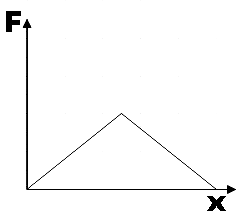
B.
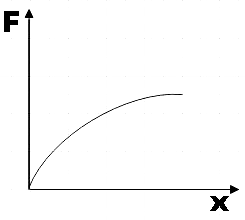
C.

D.
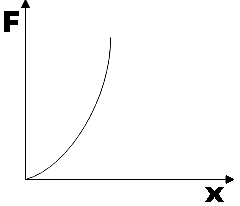




Answer
495k+ views
Hint: As we are given two charges and the distance of separation between them, you could think of a law that gives the force between these charges in terms of the given quantities. Thus, you will understand how the distance between the charges affects the magnitude of the force. And thus choose the correct graph from the given options that describes this variation as it is.
Formula used:
Coulomb’s law,
Complete step by step solution:
In the question, we are given two positive charges of the same magnitude that are fixed at points A and B. These points are said to be situated on the x-axis, point A is the origin, and B is kept at distance x from the origin. We are asked to find the graph from the given options which correctly describes the interaction of force F versus the distance x.
Firstly, let us represent the charges in a coordinate system as,
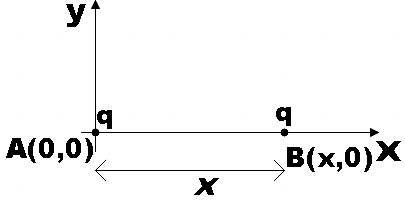
Now, let us recall Coulomb’s law which gives the expression for the force between two charges kept at a certain distance from each other.
So the force between the given two charges of the same magnitude q kept at a distance of x from each other is given by coulomb’s law as,
Where ‘
So when we plot a graph between Force F and distance x, it will be a hyperbola and as they are inversely proportional to each other, the force will be decreasing with an increase in the distance between them.
The graph that satisfies all these conditions is,
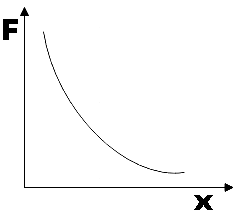
Hence, option C is the correct answer.
Note: The interaction that happens between charged objects is a non-contact force. The strength of this non-contact force is determined by three critical variables, namely, the charge of the first object, the charge of the second, and their distance of separation. Just like other forces, the electrical force is also expressed in Newton.
Formula used:
Coulomb’s law,
Complete step by step solution:
In the question, we are given two positive charges of the same magnitude that are fixed at points A and B. These points are said to be situated on the x-axis, point A is the origin, and B is kept at distance x from the origin. We are asked to find the graph from the given options which correctly describes the interaction of force F versus the distance x.
Firstly, let us represent the charges in a coordinate system as,

Now, let us recall Coulomb’s law which gives the expression for the force between two charges kept at a certain distance from each other.
So the force between the given two charges of the same magnitude q kept at a distance of x from each other is given by coulomb’s law as,
Where ‘
So when we plot a graph between Force F and distance x, it will be a hyperbola and as they are inversely proportional to each other, the force will be decreasing with an increase in the distance between them.
The graph that satisfies all these conditions is,

Hence, option C is the correct answer.
Note: The interaction that happens between charged objects is a non-contact force. The strength of this non-contact force is determined by three critical variables, namely, the charge of the first object, the charge of the second, and their distance of separation. Just like other forces, the electrical force is also expressed in Newton.
Latest Vedantu courses for you
Grade 11 Science PCM | CBSE | SCHOOL | English
CBSE (2025-26)
School Full course for CBSE students
₹41,848 per year
Recently Updated Pages
Master Class 12 Economics: Engaging Questions & Answers for Success

Master Class 12 Maths: Engaging Questions & Answers for Success

Master Class 12 Biology: Engaging Questions & Answers for Success

Master Class 12 Physics: Engaging Questions & Answers for Success

Master Class 12 Business Studies: Engaging Questions & Answers for Success

Master Class 12 English: Engaging Questions & Answers for Success

Trending doubts
Which one of the following is a true fish A Jellyfish class 12 biology CBSE

Which are the Top 10 Largest Countries of the World?

a Tabulate the differences in the characteristics of class 12 chemistry CBSE

Why is the cell called the structural and functional class 12 biology CBSE

Differentiate between homogeneous and heterogeneous class 12 chemistry CBSE

Derive an expression for electric potential at point class 12 physics CBSE




